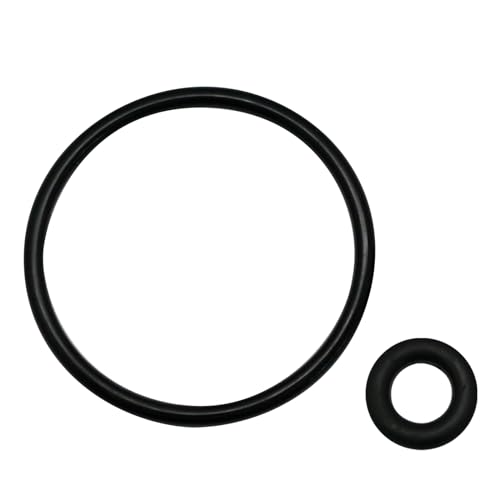Is your sewing machine making strange noises or refusing to run smoothly? It might be time to replace the belt. A worn-out or broken sewing machine belt can halt your creative projects and cause frustration. But don’t worry—replacing it isn’t as daunting as it sounds.
Understanding Sewing Machine Belts
Sewing machine belts play a crucial role in ensuring your machine operates smoothly. Knowing the different types and recognizing when to replace them ensures you maintain optimal performance.
Types of Sewing Machine Belts
Various types of sewing machine belts cater to different machine models and needs.
- V-Belts: These belts, shaped like a “V,” fit into corresponding grooves in the machine and motor. They’re common in older models.
- Lug Belts: Found in industrial and heavy-duty machines, these belts have protrusions or “lugs” providing extra grip.
- Timing Belts: Equipped with teeth, these belts ensure precise timing in modern sewing machines. They’re essential for machines with computerized functions.
Accurate belt type identification can be obtained from the user manual or customer support. Ensure the correct replacement for seamless operation.
Signs It’s Time to Replace Your Belt
Recognizing indicators of a worn or failing belt helps prevent machine issues.
- Slipping: The machine’s belt slips during use, disrupting the stitching or causing uneven seams.
- Cracks or Frays: Visible damage like cracks or frays on the belt’s surface signals wear and tear.
- Strange Noises: Unusual noises, such as squealing or grinding, suggest the belt’s compromised.
- Machine Stalling: Frequent pauses during operation indicate inefficiency due to belt problems.
Regular inspection aids in early detection and timely replacement to keep your sewing projects uninterrupted.
Step-by-Step Guide to Replacing a Sewing Machine Belt
Replacing a sewing machine belt may seem daunting, but it’s straightforward with the right steps and tools. Follow this guide to ensure your sewing machine runs smoothly.
Tools Needed for Replacement
You’ll need a few basic tools to replace the belt. Gather the following items:
- Screwdriver (appropriate for your machine’s screws)
- Replacement belt (correct type and size)
- Small pliers (optional)
- Cleaning cloth
Having these tools ready helps streamline the process and reduces interruptions.
Removing the Old Belt
Start by unplugging the sewing machine to ensure safety.
- Access the Belt Area: Locate and remove the screws on the machine’s casing, using a screwdriver. Keep the screws in a safe place.
- Inspect the Belt: Identify the belt and its path around the motor and handwheel. Take note of its exact positioning.
- Remove the Belt: Carefully slide the belt off the motor pulley and handwheel. If it’s tight, use small pliers to gently coax it off.
This completes the removal process, clearing the way for the new belt.
Installing the New Belt
Prepare the new belt by ensuring it matches the old one in type and size.
- Position the Belt: Place the new belt around the handwheel first, then around the motor pulley, ensuring it’s aligned and taut.
- Tighten Screws: Replace the machine’s casing and firmly secure it with screws using the screwdriver.
- Test the Machine: Plug in the machine and run it at a low speed to check belt tension and proper installation. Adjust if necessary.
These steps ensure correct installation, leading to smooth operation of your sewing machine.
Troubleshooting Common Issues After Replacement
After replacing the sewing machine belt, you might encounter some common issues. Address these to ensure your machine operates efficiently.

Alignment Problems
Sometimes, newly installed belts can cause alignment issues. Misalignment might result in uneven stitching or the machine making unusual noises.
Steps to Fix Alignment:
- Inspect the Belt Placement: Check if the belt sits properly on the pulleys. Ensure it doesn’t slip or deviate from its path.
- Adjust the Pulleys: Loosen and realign the pulleys if the belt isn’t positioned correctly. Ensure they’re parallel to maintain proper function.
- Verify the Needle Position: A misaligned belt can affect the needle. Verify the needle’s alignment by manually turning the handwheel and observing the needle’s movement.
Tension Adjustments
Proper belt tension is crucial for smooth sewing machine operation. Incorrect tension can cause the machine to stall, skip stitches, or run irregularly.
- Test the Belt Tension: Manually turn the handwheel to feel the belt’s tension. There should be slight resistance—not too tight or too loose.
- Adjust the Bolts: If tension is off, use a wrench to adjust the bolts that hold the motor in place. Move the motor to increase or decrease the belt tension.
- Recheck Performance: Run a few stitches on scrap fabric to ensure the machine operates smoothly. Listen for any unusual sounds and feel for resistance. Fine-tune tension if needed.
By addressing these alignment and tension issues, you can restore your sewing machine to optimal performance after replacing the belt.
Maintenance Tips to Prolong Belt Life
Proper maintenance extends your sewing machine belt’s lifespan, ensuring a smooth operation. Here are some essential tips:
Regular Inspection
Check your sewing machine belt for wear and tear monthly. Look for cracks, frays, or signs of stretching. Identifying issues early prevents sudden breakdowns during projects.
Cleaning Routine
« Unlock the Secrets: How to Stitch on TikTok from Camera Roll Like a Pro
Uncover the Magic: What Is a Sewing Bee and Why You Should Join One Today »
Keep the belt and surrounding components clean. Dust and lint accumulation causes unnecessary friction and wear. Use a soft brush or compressed air to remove debris.
Appropriate Tension
Inspect belt tension regularly. A too-tight belt strains the motor, while a loose one slips during operation. Follow your machine’s manual for correct tension settings.
Lubrication
Apply lubricant to pulleys and moving parts as recommended by the manufacturer. This reduces friction, ensuring smoother belt movement and prolonged life. Avoid over-lubrication, as it attracts dust.
Proper Storage
Store your sewing machine in a dry, cool place. Extreme temperatures and humidity degrade belt material. Consider using a machine cover to protect from dust and sunlight.
Quality Replacement Belts
Invest in high-quality replacement belts. Cheaper alternatives save money initially but wear out faster, leading to more frequent replacements and potential machine damage.

Usage Practices
Avoid abrupt starts and stops when using your sewing machine. Gradual acceleration and deceleration reduce strain on the belt. Also, don’t overload the machine with heavy fabrics beyond its capacity.
Professional Servicing
Schedule regular professional servicing for your sewing machine. Technicians can identify and fix potential issues that might shorten your belt’s lifespan before they become significant problems.
Following these maintenance tips ensures your sewing machine belt remains in optimal condition, providing consistent performance and extending its life.
Conclusion
Replacing your sewing machine belt doesn’t have to be daunting. With the right steps and a bit of patience, you’ll have your machine running smoothly again in no time. Remember to keep an eye on alignment and tension to avoid common issues. Regular maintenance and investing in quality belts can save you time and hassle in the long run. Happy sewing!


















